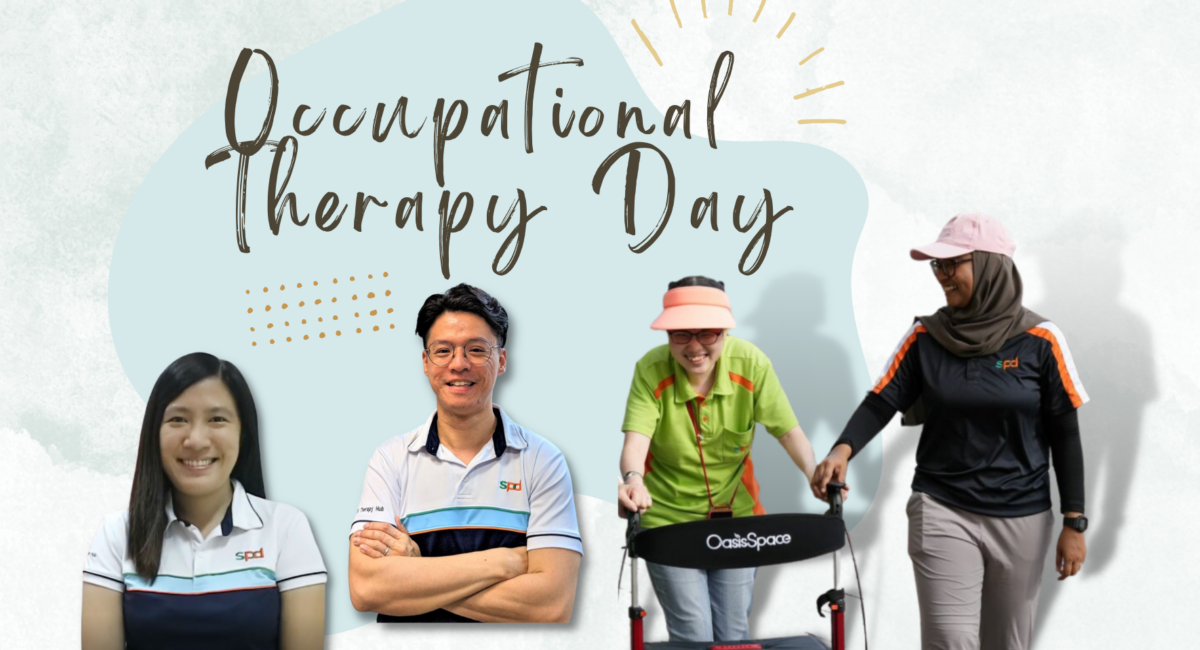In celebration of Occupational Therapy Day on 11 January, our occupational therapists (OTs) share some interesting facts about their profession.
Occupational therapy has its roots in mental health and basket weaving

Even before the term “occupational therapy” was coined in 1914, it was a method to provide therapy for mental health patients in the early days. During the first World War, occupational therapy was used to treat injured soldiers through arts and crafts such as basket weaving.
As one of the most common activities in occupational therapy clinics in the 1920s, basket weaving was popular due to its low cost and accessible materials. Additionally, it was an activity that OTs could easily adapt to suit the patients’ needs.
“Occupation” does not necessarily refer to jobs
A common misconception about occupational therapy is that it is a work-related intervention because of the term “occupation”. In fact, “occupation” describes the activities that occupy a person’s daily life that he finds meaningful. Some examples include dressing, eating, bathing, as well as going to school and work. Our OTs help clients to regain their confidence and ability to perform these daily activities through interventions.
OT rehabilitation is not just limited to upper limbs

Occupational therapy provides a ‘whole-body’ approach when it comes to rehabilitation. This is because OTs work with clients on performing their daily living activities or activities that they enjoy, most of which require the full body. For example, an OT who is helping a client to relearn how to get into a car safely would need to work on the individual’s coordination in both upper limb and lower limb.
OTs use a variety of assistive devices… like a button hook

OTs can prescribe an array of assistive devices to facilitate clients’ independence in their activities of daily living. This may include assistive devices such as a button hook to help clients to wear their clothes, or a personal mobility aid for clients who have difficulty walking.
In this video, our OT Annalita Baysa demonstrates the use of common household items to facilitate a better grip for handwriting.
OTs do not just work in hospitals

Schools, hospitals, community care facilities and mental health facilities – these are some settings that OTs may work in. The role of an OT may differ depending on the setting that they are in. Here are some snippets of our OTs from different programmes working with clients ranging from young children to adults and seniors with disabilities.
Chris Lai is an OT from SPD’s Transition to Employment Programme (TTE) where he helps clients who have acquired physical disabilities to return to work through rehabilitation, training for and modifying their work tasks, and the prescription of assistive technology.
An OT from SPD’s Development Support and Learning Support (DS-LS) Programme, Sabrina Chen Uy provides intervention support for children in mainstream pre-schools. The sessions are conducted within the pre-school, which is their natural learning setting. Sabrina also collaborates with teachers, parents, and other professionals to support the child holistically.
Valerie Leong, an OT with experience in various community care settings, provides an overview of the types of interventions that OTs may engage their clients in. From training their clients to be independent in their activities of daily living, to enabling them to engage in leisure activities that they like, OTs are always striving to support their clients in a holistic manner so as to improve their quality of life.
Happy Occupational Therapy Day to all OTs!
References
Occupational Therapy explained as simple as possible.





